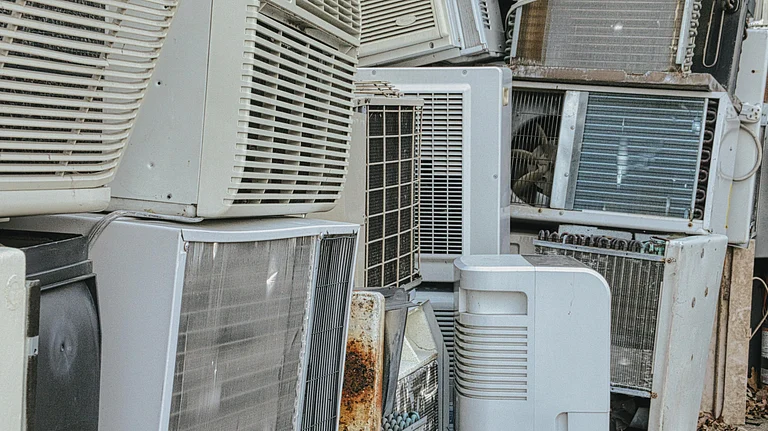We are increasingly witnessing the effects of climate change across the world. India too has not been untouched from its effects. Hotter, longer and hazardous summers are becoming increasingly frequent. Case in point: April 2022 became the hottest in 122 years for Northwestern and Central India and this year’s March was the second hottest ever recorded globally, with surface air temperatures 1.6°C higher than pre-industrial levels.
How Energy Efficiency Can Reduce Power Dependency During Peak Summers
Energy-efficient cooling is key to tackling India’s rising heat, cutting power demand and supporting sustainable growth
The key drivers behind this uptick in extreme heat events are rising emissions and surge in energy usage. Heatwaves are now up to 45 times more likely than in the pre-industrial era. This will significantly impact multiple facets of life in India—from daily comfort to agricultural productivity affecting liveability, crops, livestock and ultimately, the nation’s food security.
Clearly, we need swift and impactful interventions, because if these trends continue, then by 2050, parts of India could breach the threshold of human survivability due to prolonged exposure to extreme temperatures.
The Cooling Conundrum
The immediate consequences of heatwaves are already visible. Educational institutions are being forced to shut early, outdoor labour is becoming life-threatening and utilities are struggling to meet the rising energy demand, particularly for cooling.
Just in 2024, India witnessed a 40–50% surge in air conditioner sales, as millions scrambled for respite from extreme temperatures. Looking ahead, peak power demand in the summer of 2025 is projected to grow by nine to ten percent, driven by rising needs across households, industries and agriculture.
This represents a critical challenge at the national level. While cooling devices play a vital role in protecting public health and sustaining productivity, they also place unprecedented stress on the country’s power infrastructure. Today, air conditioners and fans account for nearly half of household electricity consumption. As millions of new ACs enter the market annually, India must act to urgently address the rising energy usage.
Smarter Cooling Solutions
There is, however, a silver lining here, as this crisis contains an opportunity. India can mitigate the impact of peak-season electricity demand by adopting energy efficiency, particularly in cooling appliances. The Bureau of Energy Efficiency (BEE) has taken a commendable step by introducing the Indian seasonal energy efficiency ratio (ISEER), a metric that helps consumers evaluate AC performance across varying seasonal temperatures.
Air conditioners with higher ISEER ratings, such as those rated 5.0 and above, consume significantly less electricity than their lower-rated counterparts. For instance, a five-star unit could slash electricity use by 30–40% compared to a three-star AC.
Additionally, Brushless Direct Current ceiling (BLDC) fans consume up to 50% less energy than conventional induction motor fans. These innovations can reduce power consumption, lower monthly bills, extend appliance lifespan and shrink carbon footprints.
According to a recent study by the India Energy and Climate Centre (IECC) at UC Berkeley, if India doubles the energy efficiency of room ACs over the next decade, it can obviate severe power shortages and save consumers up to $26bn. This is extremely significant, especially when we consider that India is currently adding 10–15mn ACs annually and could add another 130–150mn by 2035.
Nationwide and Environmental Impact
Scaling energy-efficient cooling solutions across the country could yield transformative national benefits. First, it would help flatten the summer demand curve, reducing the risk of peak-hour blackouts. This is crucial for industrial productivity, agriculture and essential services that rely on uninterrupted power supply.
Second, it would significantly reduce greenhouse gas emissions, a core component of India’s nationally determined contributions under the Paris Agreement. As the power sector is one of the largest emitters of carbon dioxide, lowering electricity use through efficient appliances directly contributes to climate goals.
Finally, energy efficiency supports India’s long-term energy security. As the nation continues to urbanise and expand electrification—especially in rural and underserved regions—managing per-capita energy demand becomes essential.
Efficient technologies offer a clear and scalable pathway to drive development, while easing pressure on the power grid and reducing environmental impact.
Energy efficiency is essential for building India’s resilience to climate risks and ensuring economic stability. By shifting focus to high-ISEER appliances and energy-saving technologies, the country can substantially reduce energy dependency during peak summer seasons. These solutions require strong policy backing, public awareness efforts and strict compliance with performance standards.
As the country faces escalating temperatures and rising energy needs, investing in energy-efficient cooling must become a foundational strategy for safeguarding public well-being and sustaining growth.
(The writer is chief general manager at Energy Efficiency Services)


